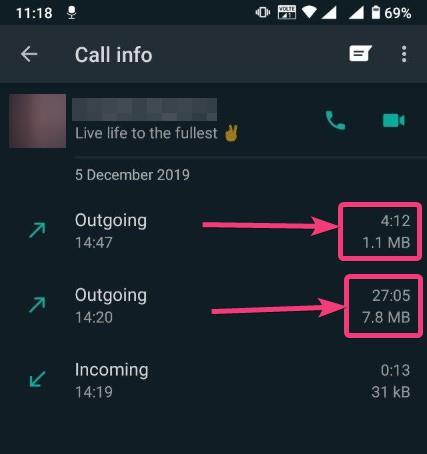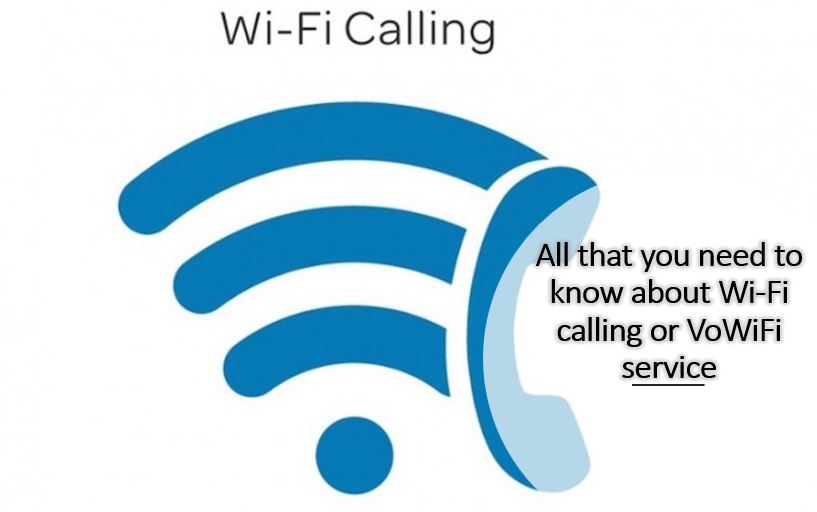When it comes to contacting people, not in front of us, there are a number of ways we can do that, but calling them over the phone is the most convenient way among all. But, besides making calls, using a mobile network, we all are quite familiar with VoIP services, that use the internet protocol to send and receive voices. So, VoIP or Voice over Internet Protocol requires an internet connection for voice-based communication. Later on, we also came across VoLTE, or Voice over LTE, which use the underlying LTE network to make or receive calls. In both cases, the internet channel is used for making voice calls.
But we are currently living in the generation when VoWiFi is just around the corner that can be used to make calls using the Wi-Fi network. We all know, we can get access to the internet using Wi-Fi, and VoWiFi will thus, use the Wi-Fi network to make or receive calls over the internet. Jio and Airtel, the two major telecom service providers in India have launched the VoWiFi service in India, and the remaining one or two service providers in India are likely to follow the footsteps soon. But there are a lot of misconceptions about the VoWiFi service, and I will talk about all you need to know about VoWiFi here.
So, without any further delay, let’s get started with everything that you need to know about the VoWiFi service.
What is VoWiFi?
VoWiFi or Voice over Wi-Fi, which is evident from its name, will use the Wi-Fi network to send or receive calls instead of using the mobile network. Just like VoLTE, which uses the LTE network to send or receive calls, VoWiFi will use Wi-Fi networks instead of the LTE network. The implication of VoWiFi can be huge as you can make or receive calls, even if you are suffering from low cellular connectivity indoors, or you cannot get a mobile network good enough to make calls in certain places but you at least have a proper Wi-Fi connection.
Unlike the normal VoIP services, you will not need to download any app or visit some website to make calls and you can make calls using VoWiFi right from your stock dialer app on your handset. The calls over VoWiFi will also be secured using the IPSec tunnel, which means all the calls through Wi-Fi will be safe and secure even if you are on an insecure Wi-Fi network in a coffee shop or airport. However, it is always recommended that you connect to a trusted Wi-Fi access point before making any calls using the new technology.
How VoWiFi can be useful?
I hope you already know the advantages of using VoWiFi, as it can be used to make calls and receive them as well when you are suffering from poor mobile network connectivity. So, if you are travelling or you are at home, where the mobile network is not properly reachable to you, you can easily use the Wi-Fi network to make calls. If you somehow manage to get a strong and stable Wi-Fi network, when you are travelling, it can also be used to make clear audio calls, which is undoubtedly going to be a boon if there is some exigency and you need to make a call.
Sometimes, due to poor mobile network connectivity, call drop is a common problem in India. However, if you make calls over some online services like WhatsApp Messenger, Facebook Messenger, you have already observed, the call quality is much clearer than that of calls through a mobile network and call drops also happen once in a blue moon, provided the Wi-Fi network don’t run into problems. So, if the cellular service providers implement the Wi-Fi calling feature properly and your Wi-Fi network is strong enough and reliable at the same time, you can make or receive calls seamlessly without worrying about poor voice quality issues and call drops.
Are Wi-Fi calls free?
There is a common question among many users about whether the calls made through Wi-Fi are free. Well, when it comes to calls over the Wi-Fi network or VoWiFi, whether you will get free calls or not will be decided by your cellular network service provider. Most plans nowadays offer free calls to any network for a certain number of days after which, you will again have to do recharge to continue making calls or get incoming calls. So if you are using a plan, which offers unlimited calls to any network, the Wi-Fi calls are going to be free at the same time. However, if you are using a normal plan, and you have to pay for making calls, the Wi-Fi calls are not going to be free at the same time, and you will have to pay the similar call charges.
So, to be said in simple words, Wi-Fi calls are not necessarily free and it is governed by the cellular service provider and the plan that you are using. There is also one caveat that you should remember about making Wi-Fi calls. If you do not have any cellular network at all, you cannot make Wi-Fi calls as well. You should have very little mobile network signal to make Wi-Fi calls and that mobile network signal will be used to count the number of minutes you are talking, and also to establish the connection for making Wi-Fi call. So, your service provider will always know that you are making a call even if it is through the Wi-Fi network and thus, it is not going to be free.
Even if you are using your Wi-Fi network to make calls you are actually using the infrastructure offered by your cellular service provider to make the call connect and thus, it cannot be free anyway. One important point that you should know about Wi-Fi calling is that, if your Wi-Fi service provider is offering you limited data and you use VoWiFi service a lot, you might have to pay a little extra to your internet service provider for making calls.
When it comes to Wi-Fi calling only the voice is sent using the Wi-Fi network. You still need a cellular network so that others could be able to call you and your phone can take the basic steps necessary to make a call to somebody else. Your service provider will also maintain a log of the calls that you make so that you can be charged accordingly or just for the sake of following their procedures.
However, unless you are making a lot of calls, I mean a lot, Wi-Fi calls will hardly wreak havoc on your internet bills, as you can find the screenshot here. It is a screenshot of the calls that I have made using WhatsApp and you can find, even for a 27 minutes call, around 8 MB of data is consumed and that too, without compromising on audio quality at all.

So, if you are making calls over VoWiFi, a maximum of 1 MB per minute will be used if you are having a 1 GB data plan, you can still make at least thousand minutes of calls, which can be more than enough for most normal people unless you are a real talkaholic.
Can you make VoWiFi calls right now?
VoWiFi services have been launched by a few cellular companies in India in a few cities. So, if your cellular network provider is offering the VoWiFi services, and you are living in the same city you can access the service right now, however, there is a secondary dependency. Your smartphone should support the VoWiFi service. As of now, most smartphones have support for VoWiFi, and future smartphones will also have support for VoWiFi.
If the VoWiFi option is not available on your handset but your hardware has support for the service, the manufacturer should enable the service through an OTA update, however, that is limited to how frequently your manufacturer roll out updates for your handset and we all know about the anarchy of the mobile manufacturers when it comes to software updates.
So, your service provider should first make the service available and you should also have a supported handset to make calls using Wi-Fi. You might think it will take an eternity for the cellular service providers to roll out Wi-Fi calling, but it will not likely be the situation of VoWiFi. We are just looking forward to the service to be rolled out soon Pan India.
There were also some cases, where the mobile devices didn’t support Wi-Fi calling even after it is made available by the cellular service provider. So, there can be cases of incompatibility between a particular mobile device and the Wi-Fi calling service offered by a cellular service provider. However, problems should be fixed with further updates from the manufacturer, as well as with the advancements of the Wi-Fi calling standards that are implemented by the individual cellular service providers.
Wi-Fi calling or VoWiFi will really make it easy to make calls if you are suffering from poor mobile network connectivity in different places. I hope, all your questions about Wi-Fi calling or VoWiFi have been answered. What is your view about this new technology? Feel free to comment on the same below.

Related Posts
What is a juice-jacking attack? How can we be safe from such attacks?
Getting the right dashcam for your needs. All that you need to know
WhatsApp iPad App Gets Major Overhaul, Adds New Communities Feature
Moto G85 5G launched in India but is unlikely to beat VIVO or XIAOMI
Rise of deepfake technology. How is it impacting society?
Smartphone Apps Get Smarter- Meta AI’s Integration Across Popular Platforms